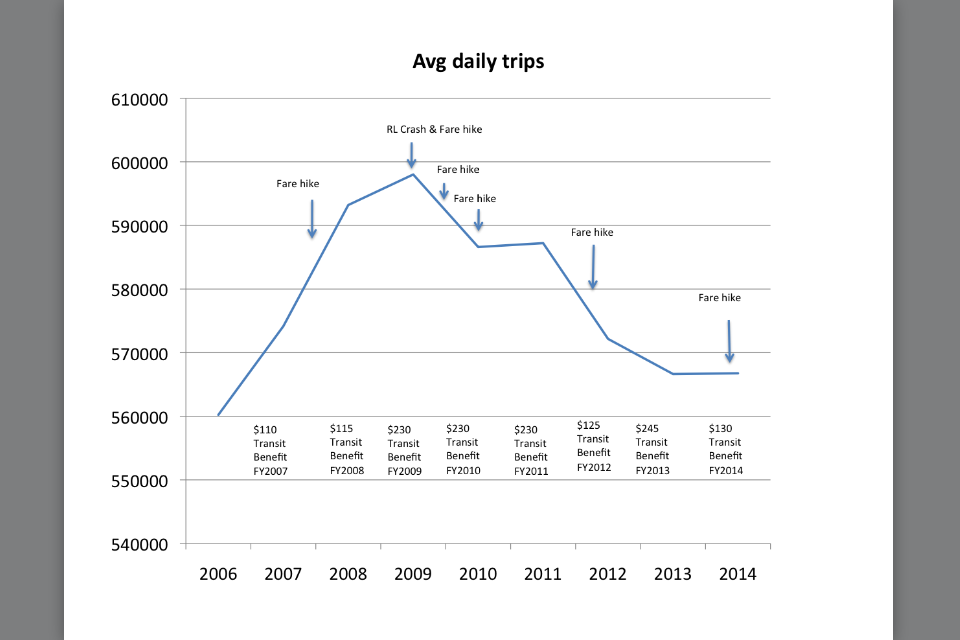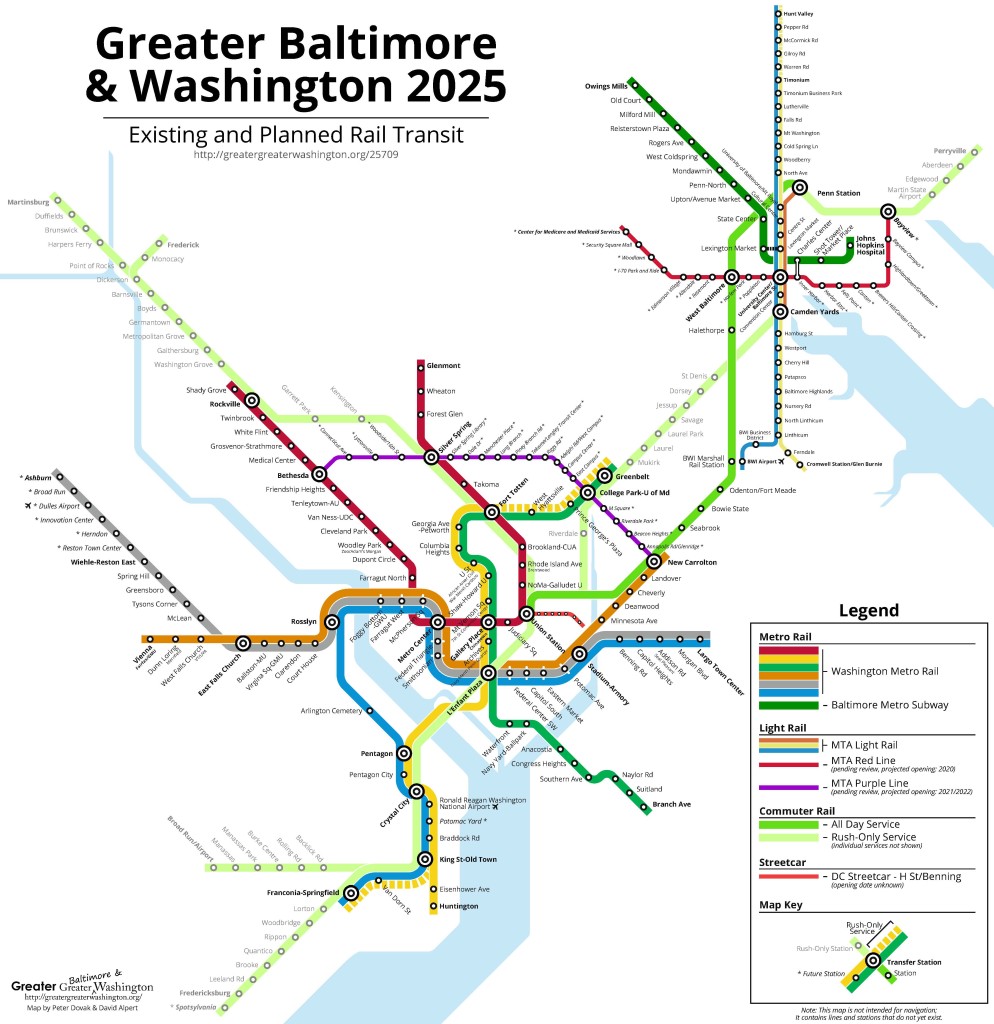Declines in Metro Ridership (Source: Unsuck DC Metro)
While Part I (“They’ve Come Undone: The Demise of the Greater Greater Washington Agenda“) overviewed the recent collapse of many plans to build new streetcar and light-rail lines across the region, today I look at why this happened.
Metro
The Metro system used to be Washington’s pride and joy. It is clean, well-designed and feels not just less dangerous but a cut above most other systems. The National Airport stop is easy and a dream location. It rightly became a key part of the identity of what it means to be a Washingtonian for many.
But Metro’s once sterling reputation now lies in tatters. While it’s still clean and well-designed, it is no longer reliable–the critical element for any transit system. The litany of complaints is well known. The escalators are perpetually broken–I can’t recall the last time they were all simultaneously working in Bethesda.
Single tracking on weekends is now the norm, so many are reluctant to ride it during these periods. Dr. Gridlock seems to oddly celebrate when only a few lines are doing it. Even during normal service, trains increasingly don’t keep to their schedules. The tragic 2009 train collision and recent death from smoke inhalation of a woman trapped on a train stopped in a tunnel have heightened safety concerns.
The key problem, however, for streetcar and light-rail proposals is that the situation is not getting better. All of the concerns outlined here have persisted for years. Twitter feeds and blogs like Unsuck DC Metro that would have once been unimaginable now have very large followings that naturally take a more jaundiced view of new transit projects proposed by Greater Greater Washington.
People are voting with their feet. In Silver Spring, average weekday boardings in 2014 were down to 13% from 2008. They’re also down 14% in New Carrollton, though decreased less at 8% at Shady Grove and even in Bethesda. Metro ridership is down so much despite strong population increases that it will be below its high point even with the addition of new Silver Line stops.
People wonder not just why we are building new transit lines when the old one needs fixing but why we should trust our local governments to run and to manage them. These new proposals would be in much better shape if Metro worked.
Cost
Streetcars and light rail are very expensive and governments have many transportation needs. Arlington’s cancelled street car would have cost $550 million. In Maryland, the proposed light-rail Purple Line is $2.4 billion and the Red Line clocks in at $2.9 billion.
Moreover, the costs keep rising in manner that makes many (rightly) suspicious and leery. As Metro has taught us, these projects have to be both operated and maintained.
While some may want to kill off all public transit projects, others seem reluctant to apply reasonable cost-benefit analysis to these projects in their eagerness for the project. Critics have homed in on these problems. In DC, the (permanently?) delayed streetcar was projected to carry 1500 people per day–even as it slows down the buses on a similar route that already carry 12,000.
More in Part III.


